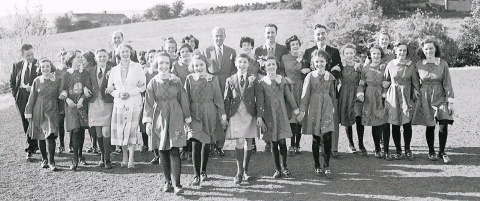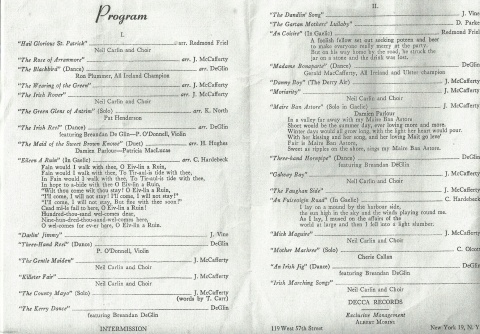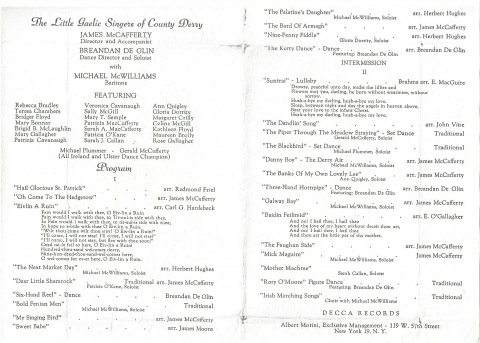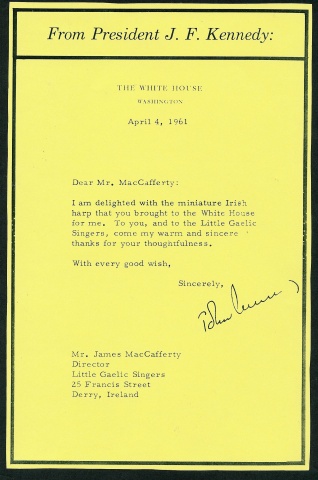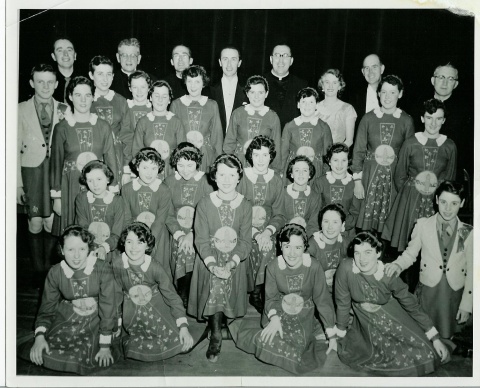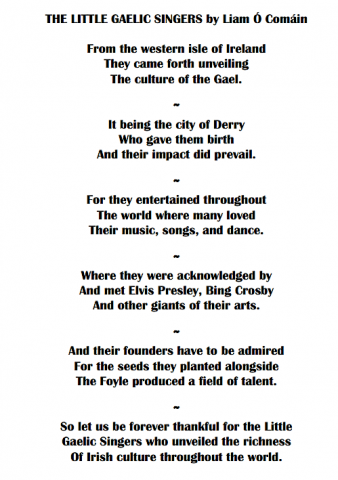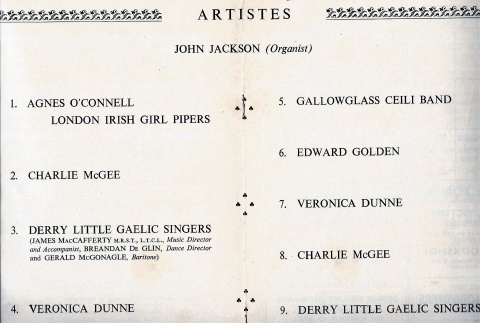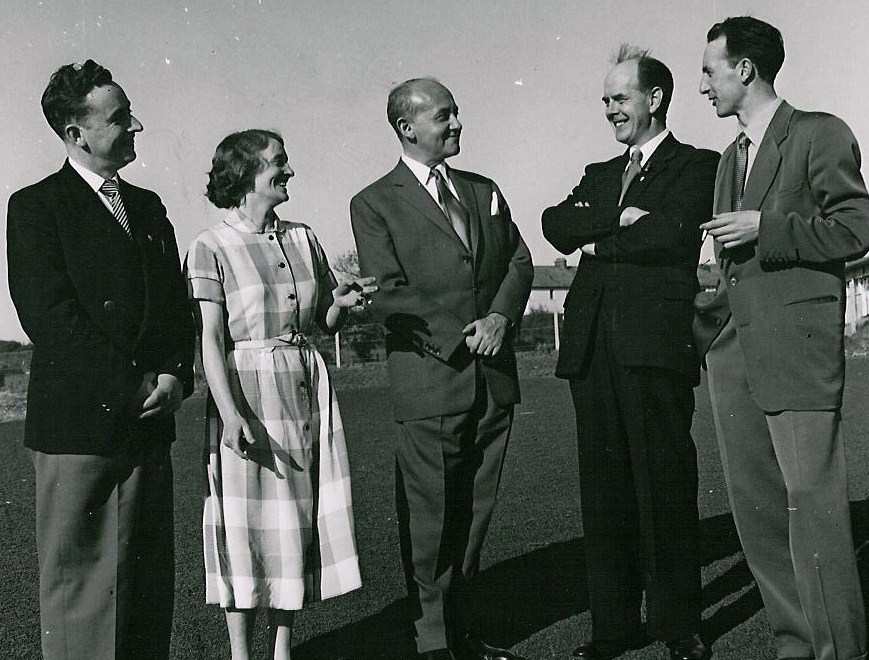
On the 12th of October 1955 the American Impresario, Albert Morini, sent James a letter inviting him to bring a children’s choir to the states. Apparently Mr Morini had been in touch with Dr Hans Waldemar Rosen, Head of Music at R.T.E. seeking advice on who would be the best children’s choir master. Dr Rosen had been the singing adjudicator at the Derry Feis that year and appreciated James’s Nazareth House choir. Having adjudicated at Feisanna throughout Ireland, Rosen had no hesitation in recommending James. As Morini put it in his letter to James- “Dr Rosen has spoken very highly of you, and has told me that you have the most experience in matters of this kind in Ireland”.
Mr Albert Morini was a very shrewd businessman who early recognised that there was a resurgence in Europe of national cultural awareness after the Second World War. He travelled extensively to identify groups of entertainers who might have a commercial appeal in the USA. The Vienna Boys Choir was just one of the many groups which he introduced to American audiences. They were to tour concurrently with the Little Gaelic Singers.
James had discussions with the Nazareth sisters who recognised this as a unique opportunity for the girls, and so he accepted the invitation. Intense preparations then commenced for the tour of the U.S.A. In the autumn of 1956 James decided to augment his Nazareth House choir with some of his best young pupils to add experience and strength. He immediately set about arranging and teaching a varied concert program which would show the choir off to best advantage. There were also pieces arranged by Derry’s own Redmond Friel, Herbert Hughes, Carl Hardebeck and others. There were haunting Irish airs and light hearted ballads for solo, two and three part rendition. The final touch was added by the inclusion of Michael Mc Williams, one of the foremost baritones in the City.
Two of Brendan De Glin’s champion boy dancers were brought in and, of course, he taught all of the other children the various steps, while Brendan himself was to be the principal in the dance routines.
Tony Black had given violin tuition to many in the group and this unique blend of singing, dancing and violin playing was in marked contrast to other children’s groups which toured America at the time, such as the Vienna Boys’ choir, which merely staged a static choral presentation. The final touch was provided by Tommy Carr (“an absolute genius” in James’s words) who produced the visual impact which ensured that each tableau, on a musical cue, changed effortlessly in to the next so that there was an ever-changing scene.
Mr Morini prided himself on his personal involvement with every aspect of his tours and he now visited Derry to view the package which the Little Gaelic Singers proposed to bring to the States. By and large he was delighted but he decided that some little scenes and action songs which Tommy Carr had produced would have little appeal for a wider audience.
Finally, Bridie Mc Guinness, one of the best known singers in musical circles for many years, had been recruited as chaperone for the children while away from home.

